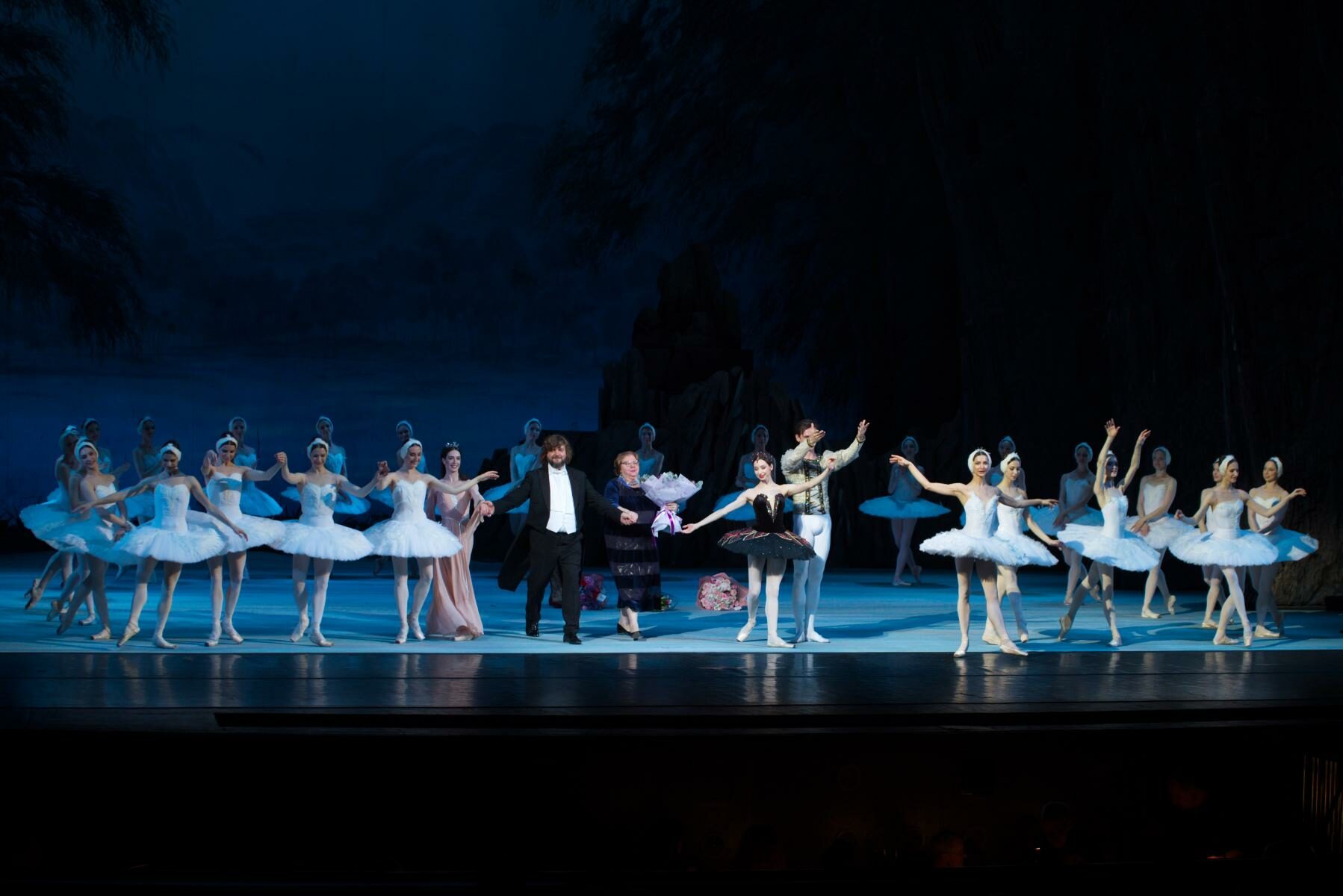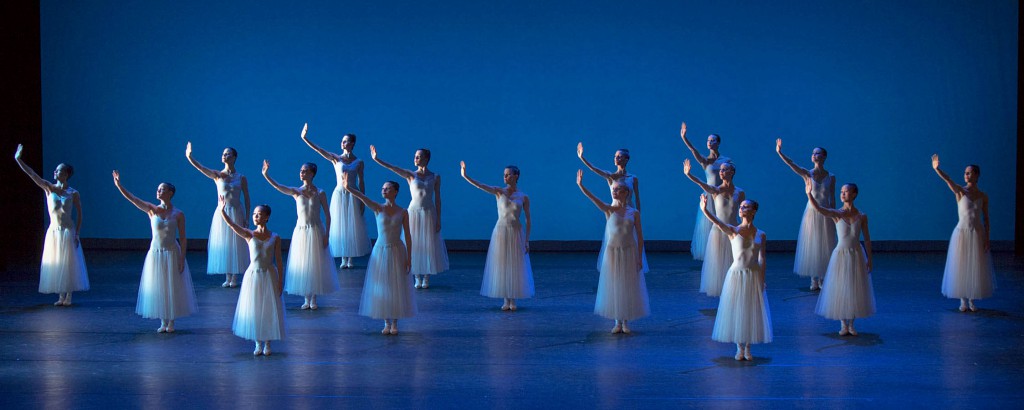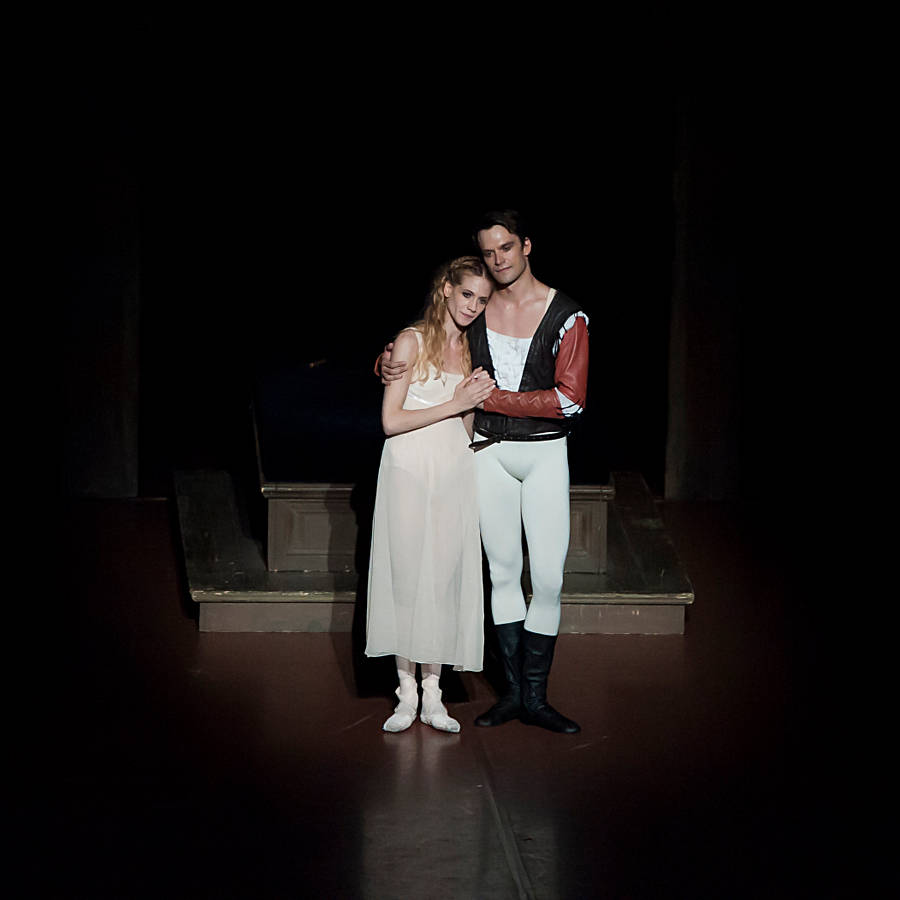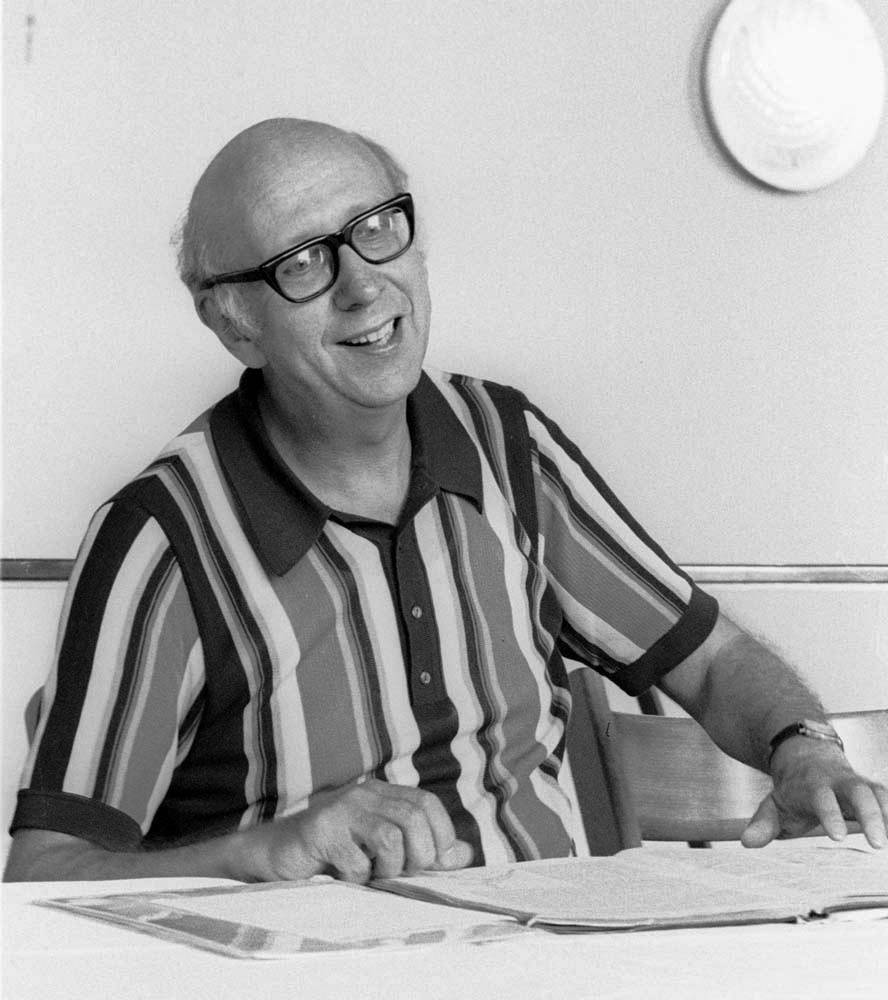Lifeworlds
“Forellenquintett” (“A-Life“, “Wings of Wax“, “Forellenquintett“)
Ballet Zurich
Opernhaus Zurich
Zurich, Switzerland
November 28, 2014
by Ilona Landgraf
Copyright © 2014 by Ilona Landgraf
 A high-tech artificial world confronting vivacious goings-on of trouts in a streamlet – that is roughly the basic point of Zurich Ballet’s triple bill “Forellenquintett”. The middle piece, a thought-provoking reflection about human hubris, about the shattered dream of commanding nature, is the connecting link between both extremes.
A high-tech artificial world confronting vivacious goings-on of trouts in a streamlet – that is roughly the basic point of Zurich Ballet’s triple bill “Forellenquintett”. The middle piece, a thought-provoking reflection about human hubris, about the shattered dream of commanding nature, is the connecting link between both extremes.
“A-Life“ is Douglas Lee’s first choreography for Zurich Ballet. “A-” stands for “Artificial”. Artificial life is an object of research but also an art movement. In both cases computer simulations, robot technology and biochemical knowledge is used to focus on processes in life systems. Lee was interested in what happens when people, emotional beings, are confronted with the digitalized, abstract world; how, for example, an installation determines the movement of dancers. (more…)














